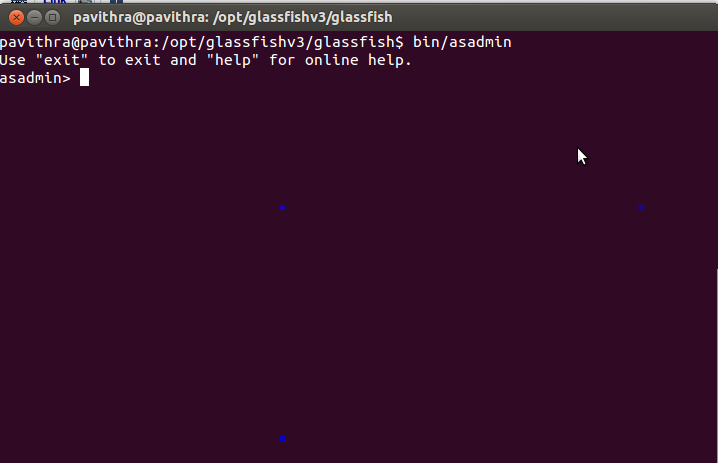
#Glassfish location install
To get around this, you can temporarily disable the certificate validation of Maven by appending the following flags to the install command: If you find that it throws a “peer not authenticated” error, this is due to the JVM not trusting the certificates of the Maven repository. If you want to save a bit of time when building GlassFish, you can append the install command with the following flag to skip all of the tests: Please ensure you have the correct versions of Maven and JDK before building. If all goes well, GlassFish can be built with a single command told you it was relatively simple! Navigate into the main directory with the terminal, and run the following command (again, make sure you have it on your path): With that done, it’s about time we got down to building GlassFish.
#Glassfish location code
This will download the source code to a folder called main in the current directory. To download the source code, navigate to where you would like the files to be downloaded to with the terminal and use the following command (make sure you have it on your path if it isn't by default):
#Glassfish location free
If you are fortunate to have a surplus of memory, feel free to bump this up! With the “hard” bit done, let’s now get the GlassFish source code.īeing open-source, GlassFish can be downloaded and modified for free. This is to stop Maven from running out of memory the default settings do not provide enough memory for it to successfully complete the installation.

If you want to see the official instructions from Oracle for building GlassFish (which was my first port of call), follow this link: ĭespite initially sounding complex, building GlassFish from source is a fairly straightforward thing to do the most complex thing required of you is to configure some Maven parameters! Let’s start off with this, as it’s a step that you don’t want to get wrong, lest you find yourself waiting for Maven to install GlassFish to only then give up after 20 minutes!Ĭreate a MAVEN_OPTS environment variable and set it as:


This build was conducted using a 64bit Linux Distro, JDK 1.7.0_55, Maven 3.2.1, and SVN 1.8.8. While GlassFish can be downloaded ready for use, even coming bundled with NetBeans, there will be some among us who need (or just want) to build it from scratch.

This blog will look at building Glassfish 4.0.1 from source and configuring NetBeans 8.0 to then use, modify, and debug it.


 0 kommentar(er)
0 kommentar(er)
